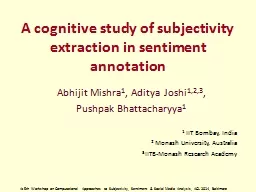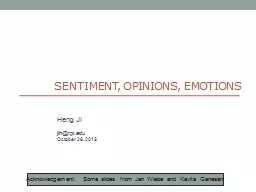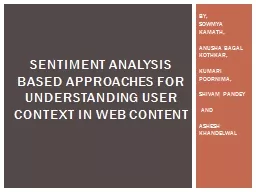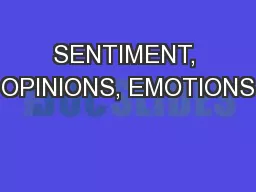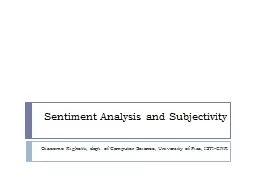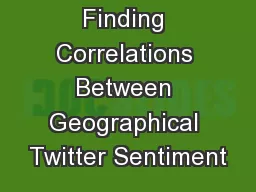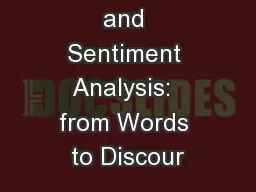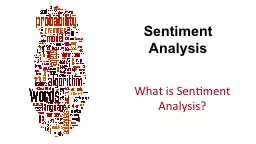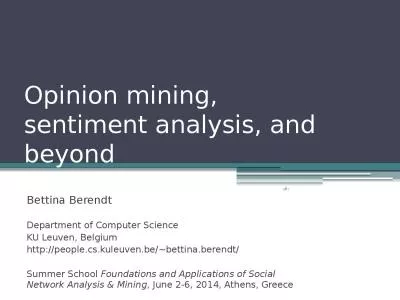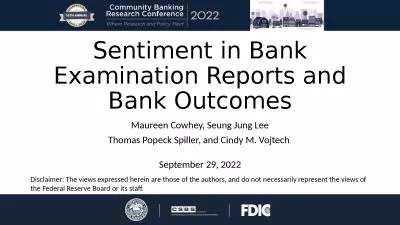PPT-A cognitive study of subjectivity extraction in sentiment a
Author : myesha-ticknor | Published Date : 2016-07-21
Abhijit Mishra 1 Aditya Joshi 123 Pushpak Bhattacharyya 1 1 IIT Bombay India 2 Monash University Australia 3 IITBMonash Research Academy At 5th Workshop on
Presentation Embed Code
Download Presentation
Download Presentation The PPT/PDF document "A cognitive study of subjectivity extrac..." is the property of its rightful owner. Permission is granted to download and print the materials on this website for personal, non-commercial use only, and to display it on your personal computer provided you do not modify the materials and that you retain all copyright notices contained in the materials. By downloading content from our website, you accept the terms of this agreement.
A cognitive study of subjectivity extraction in sentiment a: Transcript
Download Rules Of Document
"A cognitive study of subjectivity extraction in sentiment a"The content belongs to its owner. You may download and print it for personal use, without modification, and keep all copyright notices. By downloading, you agree to these terms.
Related Documents

